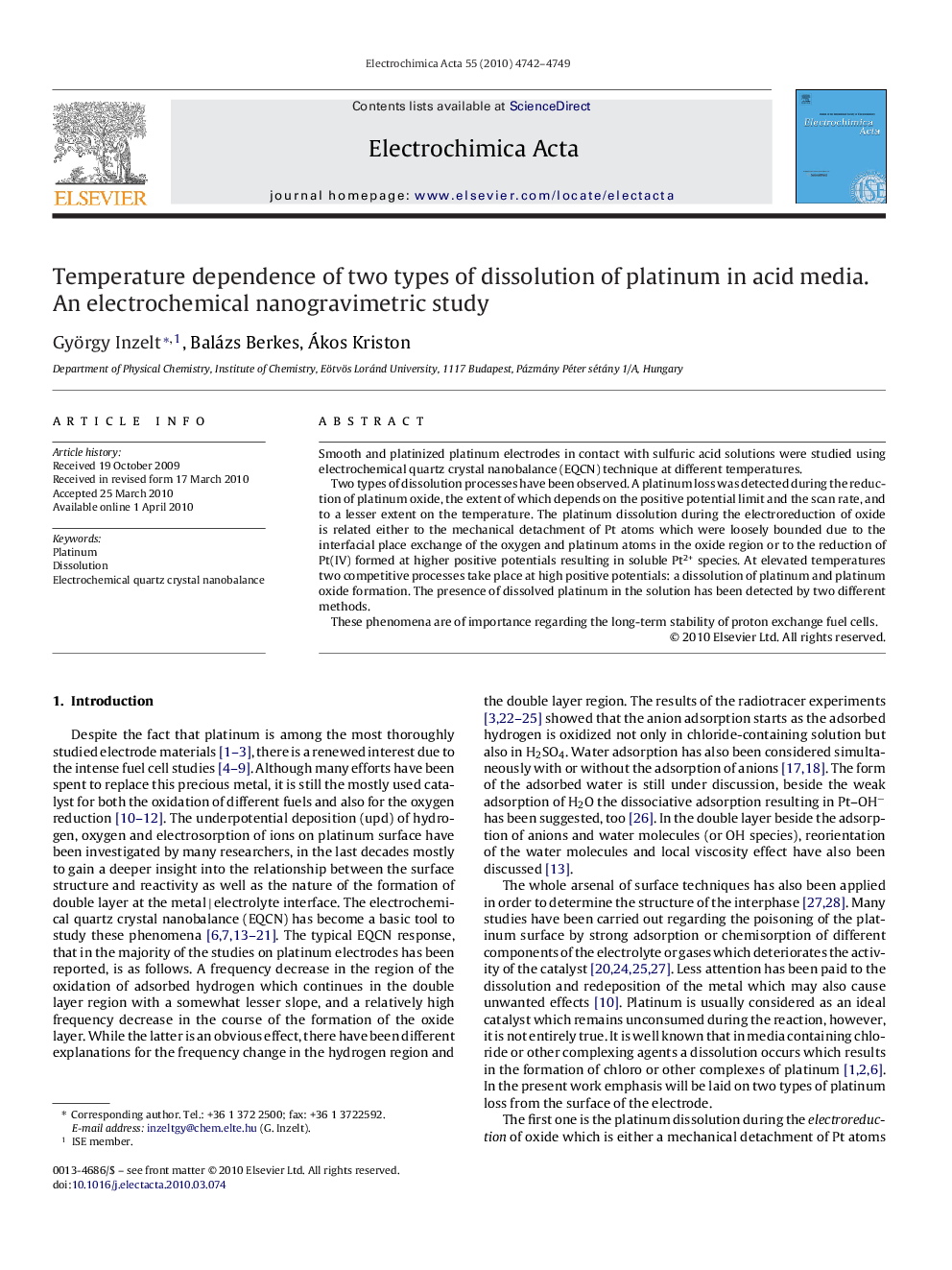| Article ID | Journal | Published Year | Pages | File Type |
|---|---|---|---|---|
| 192587 | Electrochimica Acta | 2010 | 8 Pages |
Smooth and platinized platinum electrodes in contact with sulfuric acid solutions were studied using electrochemical quartz crystal nanobalance (EQCN) technique at different temperatures.Two types of dissolution processes have been observed. A platinum loss was detected during the reduction of platinum oxide, the extent of which depends on the positive potential limit and the scan rate, and to a lesser extent on the temperature. The platinum dissolution during the electroreduction of oxide is related either to the mechanical detachment of Pt atoms which were loosely bounded due to the interfacial place exchange of the oxygen and platinum atoms in the oxide region or to the reduction of Pt(IV) formed at higher positive potentials resulting in soluble Pt2+ species. At elevated temperatures two competitive processes take place at high positive potentials: a dissolution of platinum and platinum oxide formation. The presence of dissolved platinum in the solution has been detected by two different methods.These phenomena are of importance regarding the long-term stability of proton exchange fuel cells.
